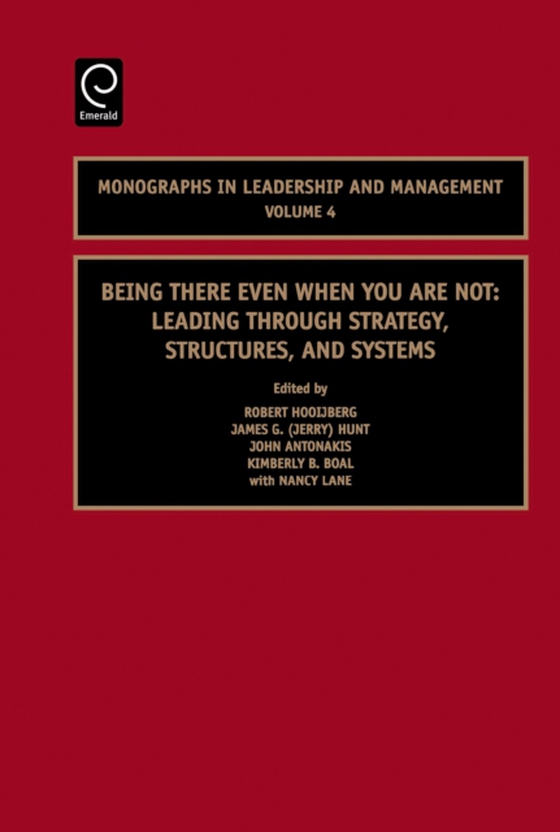
Being There Even When You are Not e-bog
1021,49 DKK
(inkl. moms 1276,86 DKK)
Whereas most of the leadership literature has focused on direct, interpersonal leadership, few researchers have examined indirect leadership or the leadership of organizations. Of course, direct, personal leadership plays an important role at all levels of the organization. However, we focus here on how leaders use strategy, structures, and systems to create the conditions that stimulate others...
E-bog
1021,49 DKK
Forlag
JAI Press Inc.
Udgivet
26 juni 2007
Genrer
Sociology and anthropology
Sprog
English
Format
pdf
Beskyttelse
LCP
ISBN
9786611049089
Whereas most of the leadership literature has focused on direct, interpersonal leadership, few researchers have examined indirect leadership or the leadership of organizations. Of course, direct, personal leadership plays an important role at all levels of the organization. However, we focus here on how leaders use strategy, structures, and systems to create the conditions that stimulate others to meaningfully contribute to the overarching goals of the organization. We therefore explore the role of the strategic leader as an architect.In this role as strategic architect, we examine how top-level leaders create organizations wherein leadership is developed, knowledge is created and disseminated, meaning is shaped and shared, and where the vision cascades to all corners of the organization. We also explore the darker side of leader discretion to show the deleterious consequences of leader power. Finally, we examine the complex nature of organizations and the roles of leaders in adapting the organization to the environment in which it operates. The six major sections in this book coincide with these aspects of the leaders architectural focus. The first chapter in each section provides a short theoretical introduction. Following the theory chapters are application chapters, highlighting the practical implications of the theory with real-life examples.The sixth section explores the relationship between complexity theory and strategic leadership. It examines indirect leadership - the leadership OF organizations. It explores how leaders exercise leadership indirectly through structures, processes and systems that stimulate others to contribute to organizational goals. It contains six major sections: leadership development, knowledge management, influencing and shaping meaning, leader discretion, vision cascading, and complexity theory and the networked organization.
 Dansk
Dansk

